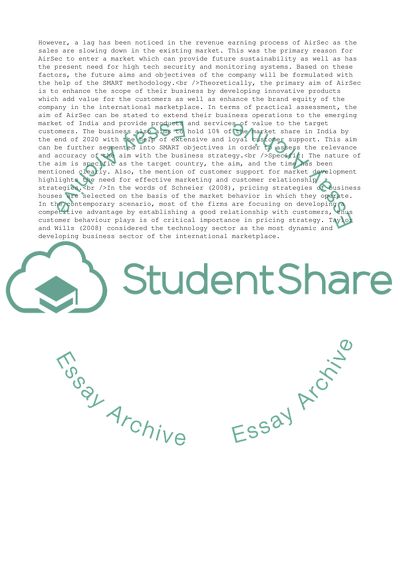Cite this document
(AirSec Ltd. and its Objectives Case Study Example | Topics and Well Written Essays - 2000 words, n.d.)
AirSec Ltd. and its Objectives Case Study Example | Topics and Well Written Essays - 2000 words. https://studentshare.org/management/1877722-case-study-airsec-ltd
AirSec Ltd. and its Objectives Case Study Example | Topics and Well Written Essays - 2000 words. https://studentshare.org/management/1877722-case-study-airsec-ltd
(AirSec Ltd. And Its Objectives Case Study Example | Topics and Well Written Essays - 2000 Words)
AirSec Ltd. And Its Objectives Case Study Example | Topics and Well Written Essays - 2000 Words. https://studentshare.org/management/1877722-case-study-airsec-ltd.
AirSec Ltd. And Its Objectives Case Study Example | Topics and Well Written Essays - 2000 Words. https://studentshare.org/management/1877722-case-study-airsec-ltd.
“AirSec Ltd. And Its Objectives Case Study Example | Topics and Well Written Essays - 2000 Words”. https://studentshare.org/management/1877722-case-study-airsec-ltd.


